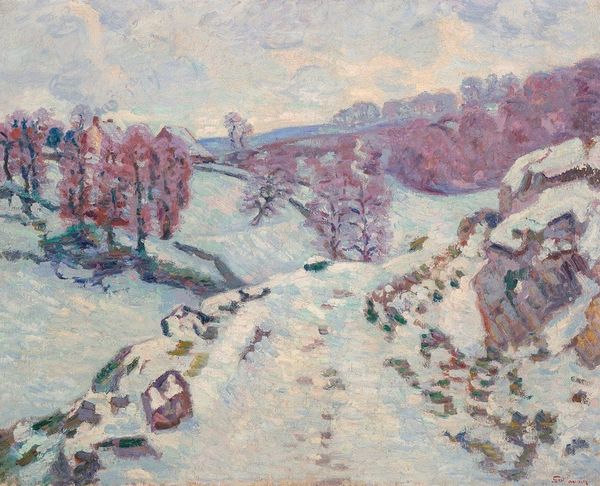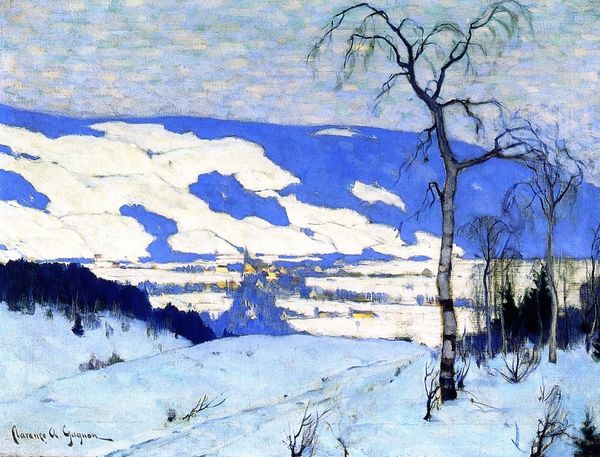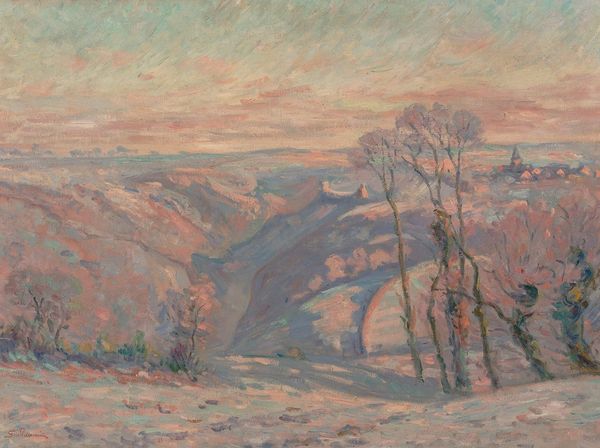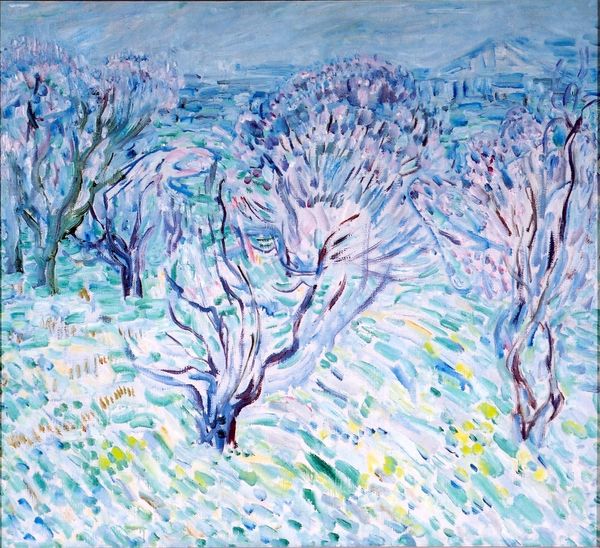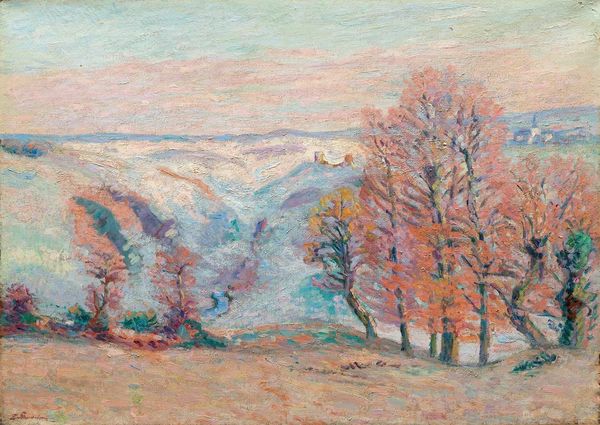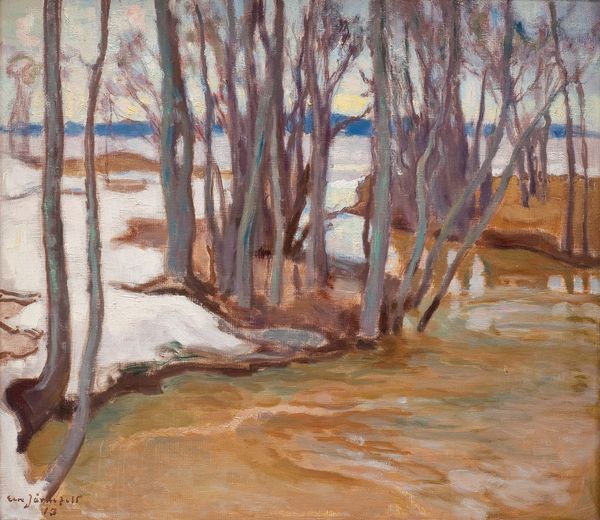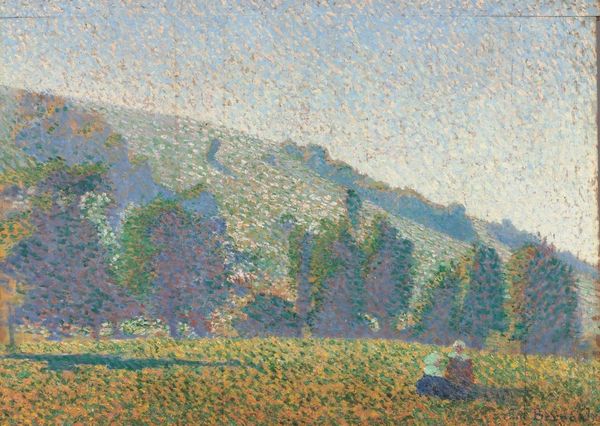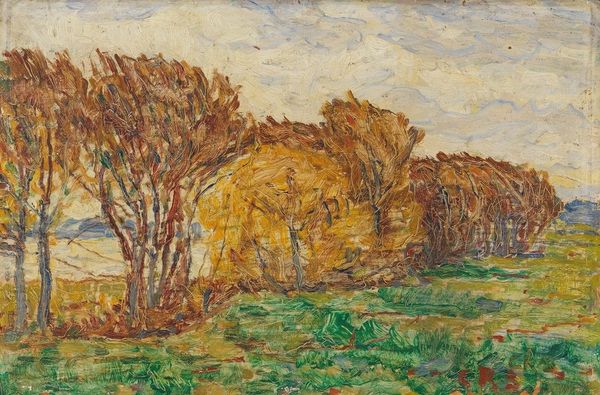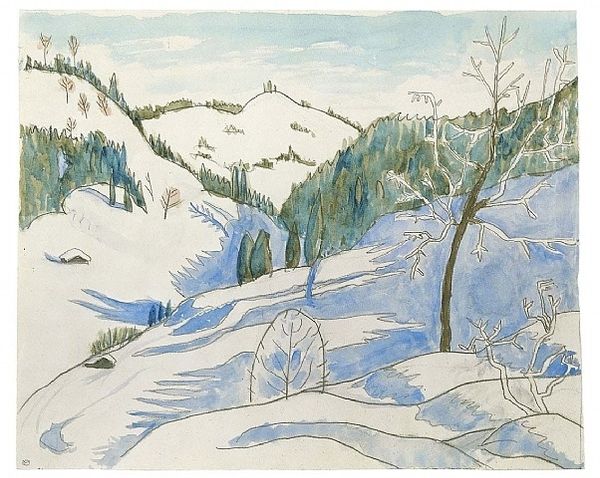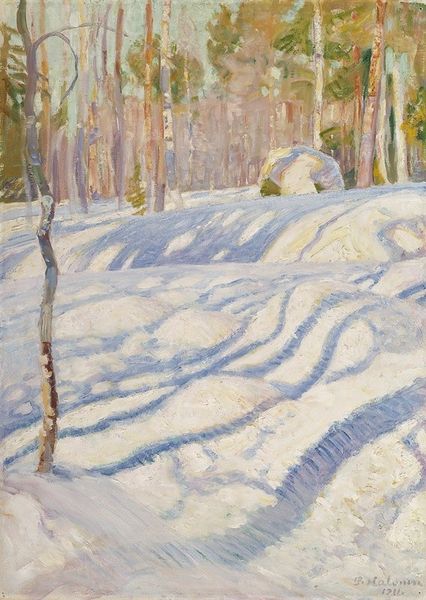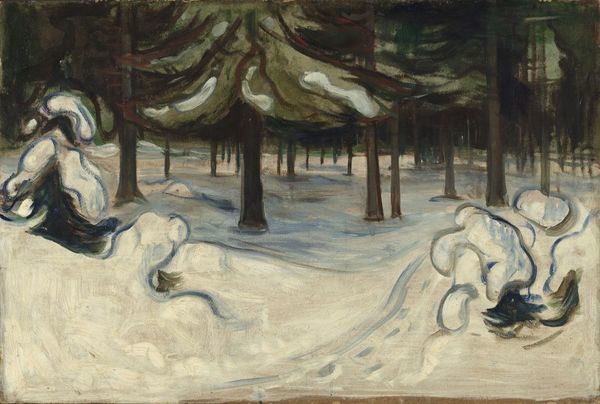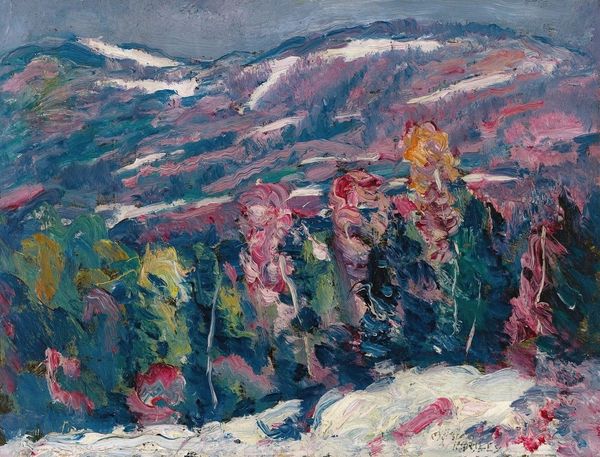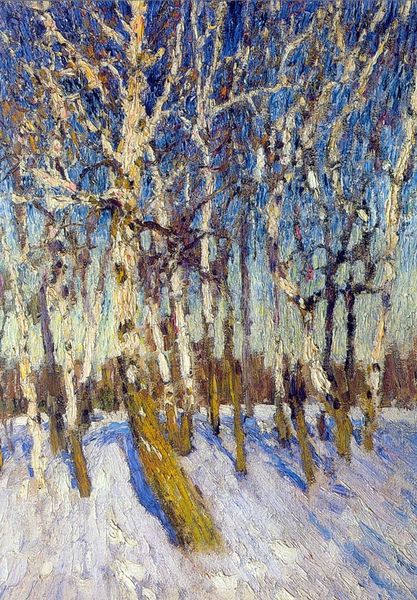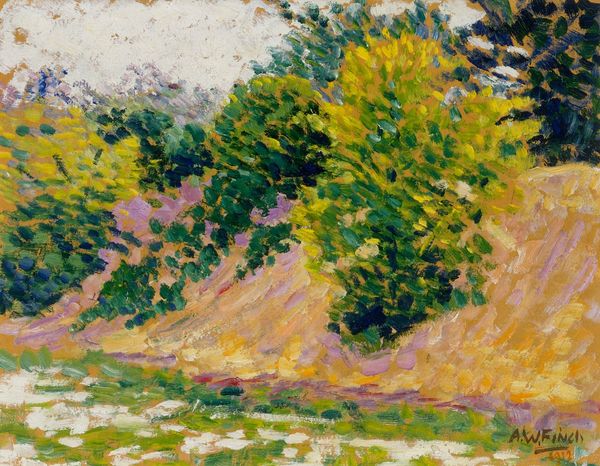
#
abstract painting
#
canvas painting
#
impressionist landscape
#
possibly oil pastel
#
handmade artwork painting
#
oil painting
#
fluid art
#
acrylic on canvas
#
watercolor
#
expressionist
Copyright: Public domain
Curator: Julian Fałat's "Winter Landscape from Bystra" offers a captivating view of a snow-covered scene. I'm particularly drawn to how he handles light and shadow, suggesting an immersive winter atmosphere. What stands out to you? Editor: Initially, it's the composition. The diagonal sweep of the snowy hill immediately captures the eye, directing it toward the more distant, pale horizon line. The stark contrasts are what make the impression. Curator: Indeed. Fałat was fascinated with capturing the effects of light and atmosphere in different seasons, something Impressionists valued. His material choices - potentially watercolor and possibly gouache on paper – contributed to that effect. We see delicate washes but also opaque touches. It seems he was experimenting with techniques for creating depth and texture within this piece, while depicting rural labor or everyday rurality. Editor: It’s interesting that you mention “depth”, since the spatial composition and layering is key. I want to note that the structural arrangement plays against atmospheric haziness here. Consider how the varying densities of the overlaid colours suggest a recession into space. It seems a little contradictory though—or more so, nuanced. Curator: This makes me think that it's not necessarily about accurately depicting what’s there, but rather communicating his experience. Fałat likely sought to render not just the visual reality but also the social context – the quiet, isolated life in the Polish countryside during winter, but also how the local labor contributed to its landscape. Editor: Perhaps. But I think the expressive potential lies less with the contextual realities and more with the structural contrasts between light and shadow in the painted trees—a dynamic interplay rather than simply the sum of its represented parts. There’s tension between stillness and dynamism there that animates what would otherwise be a simple pastoral scene. Curator: Agreed, though that “tension” may be heightened by social dynamics he was acutely aware of. He certainly captures an arresting feeling in that stark composition. I'm reminded now of all who labored on or through the Polish countryside when seeing this work—a beautiful synthesis that feels somehow so distinctly Fałat's, with respect to the materials used for conveying the weight and starkness that one can find in a wintry pastoral area. Editor: Ultimately, whether we focus on materiality, composition, or its emotional effects, the landscape remains potent with expressive possibilities for all of us as viewers today. It’s quite evocative indeed.
Comments
No comments
Be the first to comment and join the conversation on the ultimate creative platform.
